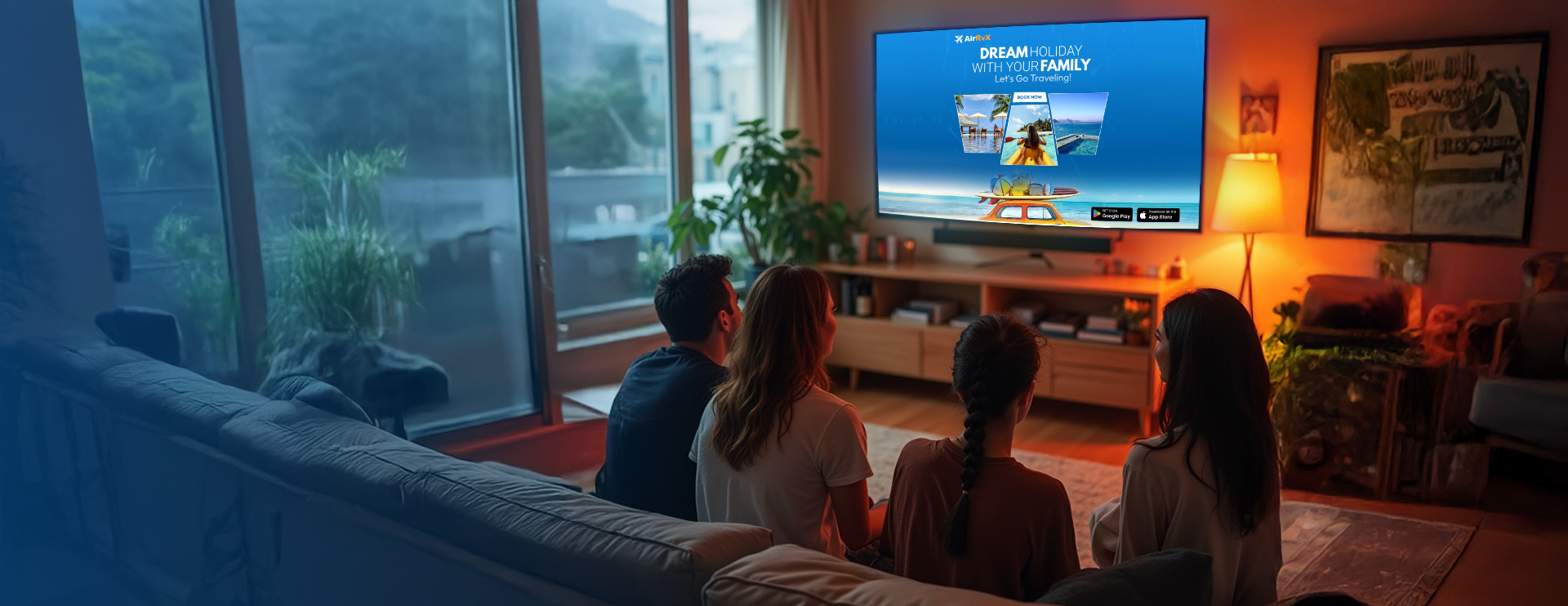As food delivery apps become a routine part of people’s daily lives, it is important for app marketers to know how to find the right audience.
Food delivery services have grown immensely in the past five years, and that growth hasn’t slowed down even during the pandemic. On the contrary, food delivery has seen an ongoing activity during times of lockdown. Nowadays, most food delivery apps have grown to offer more than just meal delivery. Their services now expand to meet the users’ diverse needs: from options for pick-up, grocery shopping, and e-wallets to services catered to B2B, on-demand delivery apps cover a wide range of necessities.
Despite the growth and evolution of the business model, apps in the food delivery vertical still face a hurdle to surmount: how to make their new users stay and become habitual customers.
This article covers how food delivery apps can generate more orders and improve their users’ LTV (lifetime value) with a programmatic strategy focused on re-engagement.
Increasing orders, not just new users
Food delivery businesses face common business challenges. They operate in a highly competitive vertical, need to create brand differentiation to acquire and retain customers, and usually work on low margins.
Therefore, food delivery apps depend on two main factors for their growth: acquiring ample supply and attracting a large user base.
These businesses tend to first focus on user acquisition strategies through paid advertising. Often, retargeting is a secondary goal as apps rely initially on their owned channels like CRM or push notifications to drive repeat purchases. But this modus operandi doesn’t grant the expected rewards.
In reality, only a tiny percentage of the users are retained and activated post the 30 days install period. Most app users would have churned within the first week of installing the app, making all the user acquisition investments go to waste. Owned channels alone aren’t enough to retain new users and drive more revenue.
How can you achieve sustainable growth, then? Run programmatic re-engagement alongside user acquisition campaigns. This will maximize app engagement and orders, creating a powerful engine for long-term app growth.
A full-funnel programmatic strategy to sustain app growth
For a new app, the primary goal is to drive installs. To do this, you must understand how your users interact with your app and create a great onboarding experience for them.
By using deep learning algorithms, you can target high-value users with the right messages at the right time, and keep them engaged.
A full-funnel programmatic strategy has not only helped advertisers boost their scale and media impact but also deliver improvements in overall results like incremental revenue, customer lifetime value (CLV), and profitable conversion in different stages in their purchase funnel.
User acquisition continues to be king, but re-engagement is the new gold mine
New users need to be activated and re-engaged at an early stage to improve their lifetime value. Retargeting ads that are engaging and served at the right time can act as the first touchpoint between users and your app. They also facilitate a smooth user experience in-app, aid product discovery, and ultimately drive regular purchases as well as increase order value.
Re-engaging app users within the first seven days of installation and throughout the first month will decrease their churn rate and assist with proper app onboarding. The first-week post-install is crucial to get your new users acquainted with your app features, unique offers, and/or subscriptions. For users, a well-planned re-engagement strategy will help create higher brand stickiness and habit of usage that will translate into loyalty towards your app.
Build your programmatic strategy to:
🔹 Find and acquire a larger pool of high-quality users where they are.
🔹 Create a habit: get your users familiar to use your app often and drive repeated orders.
🔹 Power and accelerate your retention efforts and improve users’ LTV.
Structuring your re-engagement campaigns
When planning your re-engagement strategy, consider in which environment you’ll be running a retargeting campaign. Are you targeting LAT (limited ad tracking) or non-LAT traffic? Retargeting of LAT audiences and deterministic attribution is no longer possible without IDFA attribution. It requires a revamped approach, as explained here.
For non-LAT traffic, the approach is straightforward. There are a few pointers to take into consideration:
🔹 Don’t wait for your users to become inactive to start your re-engagement campaigns. Start early and use day one, day three, and day seven retention metrics to guide your ad campaigns.
🔹 Track the user journey within your app and look for moments of churn or any onboarding bottlenecks — those signal potential for improvement that advertisers can use in their product development and marketing campaigns.
🔹 Plan out a set of intended actions you wish your users to take and cater campaigns to each one of them. Direct your ad campaign to engage your users to fulfill each particular action and see your users’ lifetime value increase.
🔹 Gather enough data to understand the users’ usual behavior (both on your own app as well as what are the industry standards). Data about downloads, engagement, revenue, retention, paid and organic downloads, demographics signal different app usage, and intent patterns relevant to optimizing your re-engagement strategy.
For app marketers, re-engaging their new users and keeping an eye on their retention patterns and in-app event data will allow for better targeting and more informed decisions regarding catering for future campaigns.
Re-engaging your audience can be achieved with different tactics. The audience will already be familiar with your app since they have already installed your app or even complete an order before.
Targeting and segmenting your audience
Segmenting your audience into different groups (either by segmenting it by active purchasers or inactive users, for example) allows you to analyze what potential demographics are easier to target or are not yet fully covered by the competition. Defining user segments permits catering the campaign’s mechanics (ad creatives, message, call-to-actions) to the audience’s specific preferences. It also allows the advertisers to decide the pull factor that will get these users to come back to the app to complete their first order or get a special offer such as free delivery or a discount.
The targeting tactics used in non-LAT traffic will still work on LAT traffic with some adaptation. With aggregated data available, advertisers will still run campaigns with a certain level of personalization. Although we won’t have access to specific meals and restaurants a user has interacted with before, we have visibility on what locations and what time of the day our audience generally interacts with. This data type allows us to use Dynamic Content Ads to create messages that will match these broad criteria.
Using aggregated or contextual data
Data is still the critical factor that will make or break a programmatic campaign. Therefore, advertisers must rely on a partner that can perform that data analysis and identify patterns that will enable them to segment and target your audience to drive retention, growth, and revenue with each campaign.
Re-engagement campaigns on LAT traffic won’t have user-specific or first-party data available to run very personalized campaigns. Still, they can use contextual data for their targeting to carve out very relevant messages to a broader audience based on the time of the day, the weather conditions, location, or special occasions.
This is a tried and tested strategy that has consistently driven results for clients in this industry. In one particular case, a client surpassed their initial goals by creating a campaign using weather condition data to adapt their messaging. The campaign focused on pick-up offerings when the weather was pleasant and switched to focus on delivery offerings whenever they identified rainy or stormy weather.
Seasonality in the food delivery verticals
Seasonality and special occasions play a considerable part in ad campaigns for food delivery. Whenever social or family gatherings are in order, food takes center stage and poses an opportunity for apps to fulfill users’ preferences in a meaningful way.
Targeting users during big festivities (think Christmas, Ramadan, Chinese New Year, or even sports events, such as Football World Cup, or Cricket Premier Leagues, for example) will reflect increased opportunities for more sessions and new users’ first purchases and incremental revenue.
In any of these cases, the aim of re-engagement campaigns is to delight and inspire users to explore the app and order, independently of the occasion or time of the day.
Closing notes
Users exposed to re-engagement campaigns are prone to be more active within an app, be more receptive to offers and spend more in the long term. Running re-engagement campaigns not only helps you maintain a healthy, active, and thriving user base but also allows you to do so at a lower cost. Your re-engagement strategy is the guarantee that your user acquisition efforts won’t go to waste.
If you wish to discuss further how we can create a holistic campaign for your food delivery app, contact us now.
We’re happy to consult you on all your programmatic needs.



